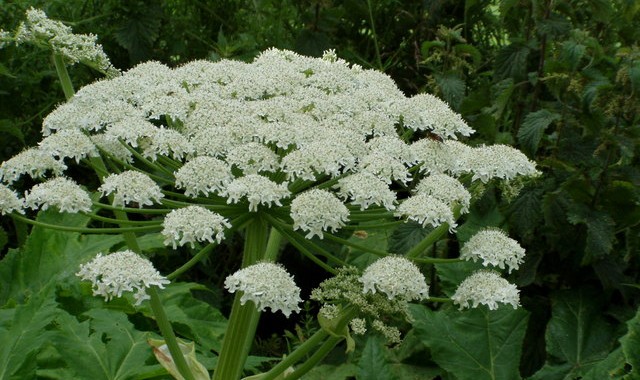You may have noticed that Japanese Knotweed has been in the news quite frequently recently, and that’s no surprise. The plant can choke your mortgage and give you a criminal record, but there’s another invasive plant on the block that has been causing havoc. It has been around in the UK for years; Giant Hogweed is just as harmful as Japanese Knotweed, although not illegal to have on your property.
What is Giant Hogweed?
Like Knotweed, Giant Hogweed is classified as an invasive plant that can grow over 10ft tall. It’s a close relative of cow parsley, but unlike cow parsley the sap of this plant can cause harsh burns when it comes into contact with human skin. Whilst there is no legal obligation for a homeowner to remove Hogweed from their property, councils will usually look to have it removed if found in local areas to stop future harm. It is recommended that Giant Hogweed is removed professionally because of nasty burns that can be caused if not eliminated carefully.
How can you identify it?
Similarly to Japanese Knotweed, Giant Hogweed will noticeably change over the seasons. We have an infographic on how to identify Japanese Knotweed throughout the seasons here. If you’re looking for Giant Hogweed, you should generally try to identify:
• Purple coloured thick, bristly stems
• White flowers in clusters
• A plant that looks much like cow parsley
• Thick white hairs commonly found at the base of the plant
• In winter, look for a woody stem and dead, grey looking plant
What’s the difference?
Similarities –
• It is illegal to plant or help to grown both Japanese Knotweed and Giant Hogweed in the UK.
• Both of these invasive plants must be carefully removed and disposed of at a licensed landfill site. They can spread very easily and invade other areas.
• Both of these invasive plants are injurious weeds as they cause a nuisance and/or harm to the area that they are in. Both of these also outgrow more favoured plants because of their height and strength.
Differences –
• Whilst Japanese Knotweed can find homeowners in trouble for allowing it to grow on their properties, Giant Hogweed implies no obligation for the homeowners to remove it.
• Japanese Knotweed can be cut down an eaten by humans and animals, as it has a rhubarb taste. Giant Hogweed on the other hand has a sap that will burn when in contact with sunlight, and is toxic if eaten.
• Japanese Knotweed causes harm to it’s environment by growing through roads, walls to houses and spreading. Giant Hogweed on the other hand causes third degree burns and blisters when it’s sap is exposed to sunlight.
Professional removal services.
Often, Giant Hogweed can be treated without the use of chemicals to remove it. The plant can be dug out, but when this is not possible because of the size or depth of the plant, chemical control is a good option. Glyphosate-based weed killers work well with this invasive plant. Like Japanese Knotweed, Giant Hogweed must be disposed of as a controlled waste product. It must be taken off of the site to a licensed landfill.
To avoid personal injury and ensure that the invasive plant is disposed of safely, Japanese Knotweed Sussex offer professional removal services. With years of experience across West Sussex; Sussex, Surrey, Brighton, London and Kent, we are experts in identifying and destroying the plant.
For more information, or to get a quote, please contact us on one of the following:
Tel: 01273 499 029
Email: japaneseknotweedsussex.co.uk





